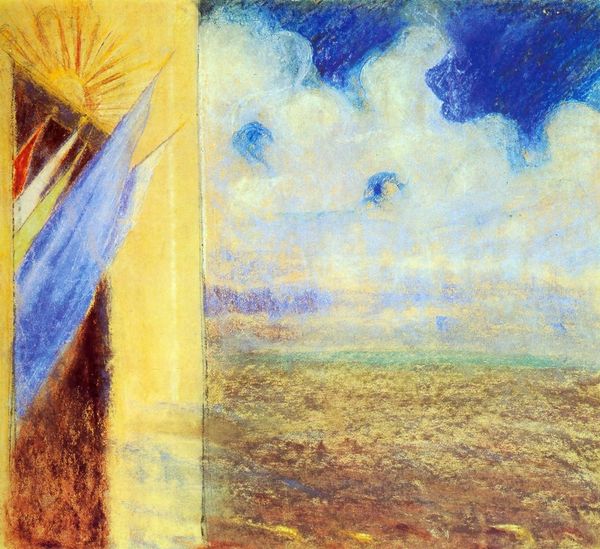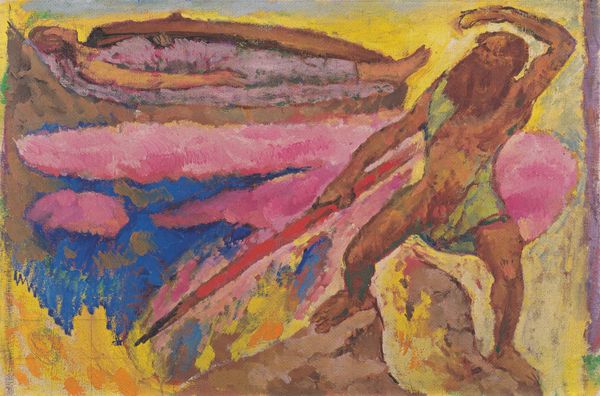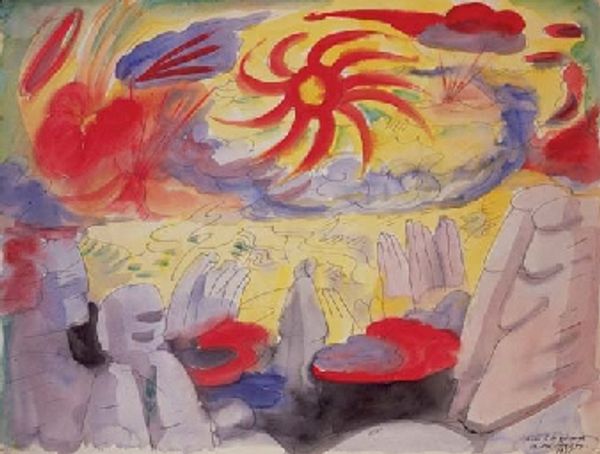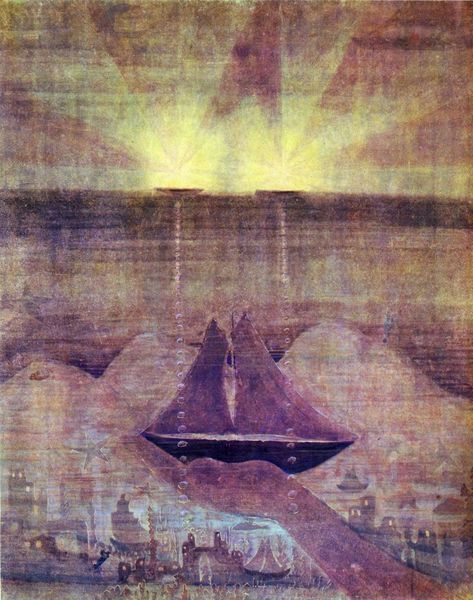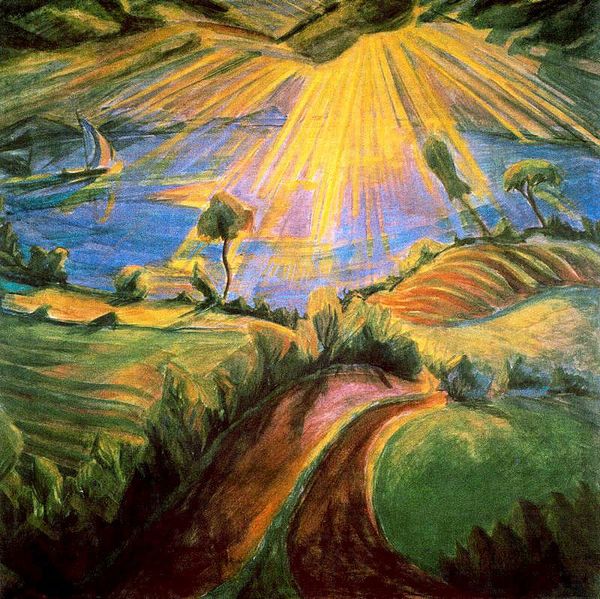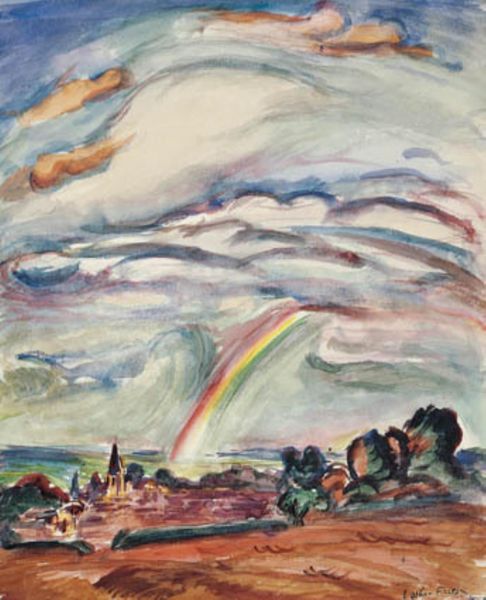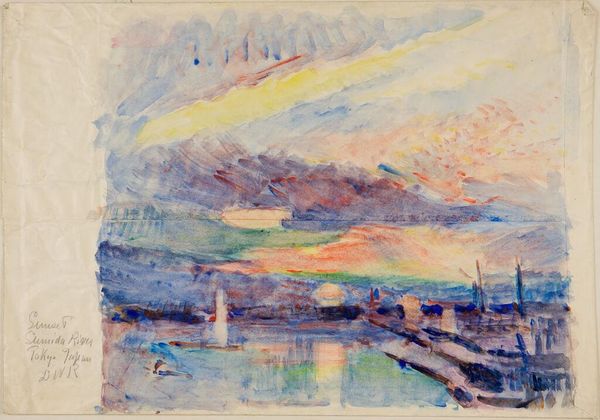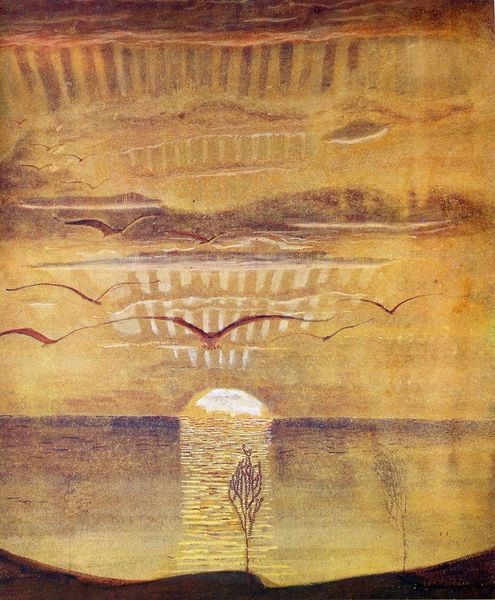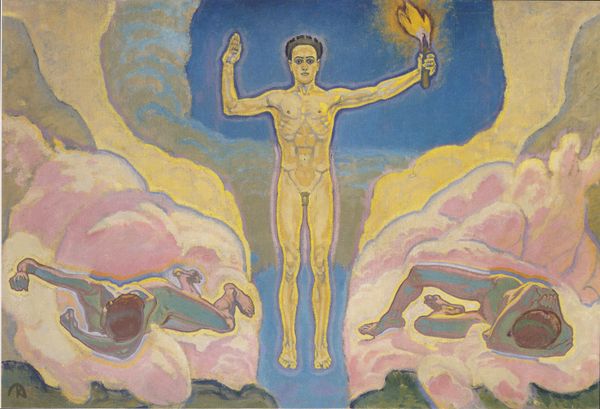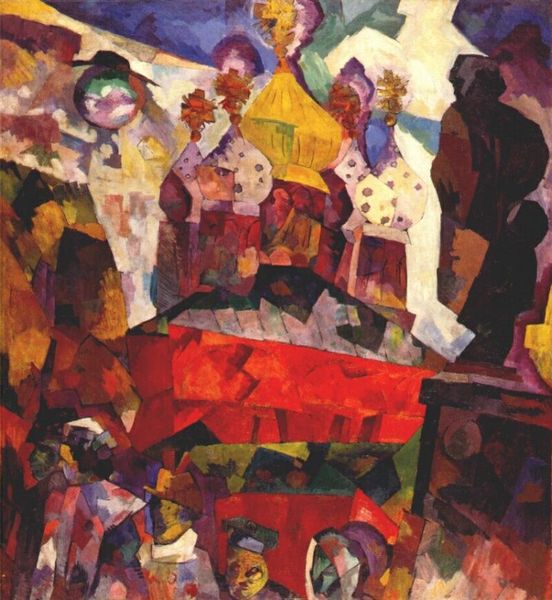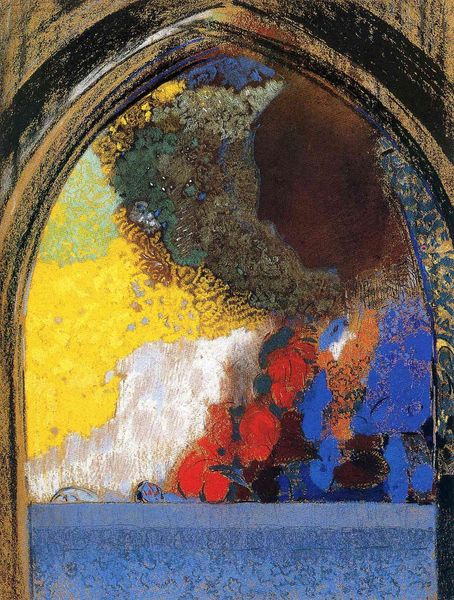
tempera, painting, oil-paint, impasto
#
tempera
#
painting
#
oil-paint
#
landscape
#
form
#
impasto
#
geometric
#
expressionism
#
line
#
modernism
#
expressionist
Dimensions: 455 x 780 cm
Copyright: Public domain
Editor: Right now, we're looking at "The Sun," a 1916 oil and tempera painting by Edvard Munch. The energy in this piece is wild! The sun dominates the composition with explosive rays, yet there's a calmness in the landscape below. What do you make of this interesting juxtaposition? Curator: Well, it’s as though Munch isn't simply painting the sun, but rather painting sunlight, its raw energy transforming the landscape. Look at those geometric shapes struggling to contain that radiant force, the impasto almost vibrates. You know, light wasn’t always just light to Munch. His sister Sophie died of tuberculosis when he was young, and I think Munch understood that, sometimes, to feel the sun's warmth on your face is also to feel the shadow it casts, always reminding us of absence. Editor: So, you see a deeply personal element here. But could it also be seen as an expression of nature’s power more broadly? Curator: Absolutely. Munch, after all, was recovering from a nervous breakdown during this period. Painting "The Sun", might be more than about darkness, and the light could represent a renewed creative force – something life-affirming in its sheer scale. Do you get a sense of hope from this? Editor: I do. The colours, though somewhat muted, are vibrant enough to feel optimistic, even triumphant. The composition emphasizes the geometric aspect and also brings a sense of dynamic symmetry, and rhythm. Curator: Precisely! "The Sun" could serve as a powerful reminder: even when darkness threatens, art – like the sun – has the power to illuminate and inspire us to emerge with renewed conviction. Editor: I hadn't thought of it that way, but it really changes how I experience the painting now. Curator: Yes, maybe we need those reminders sometimes, don’t we?
Comments
No comments
Be the first to comment and join the conversation on the ultimate creative platform.
